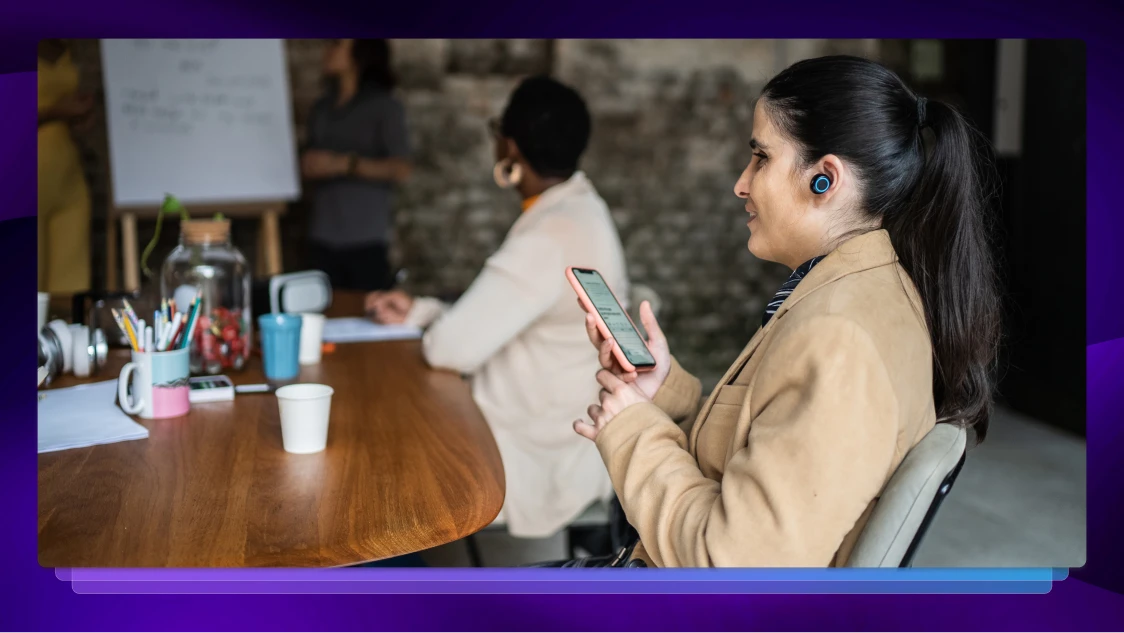Benefit From How Netflix & Hulu Are Solving Video Accessibility Problems
Netflix and Hulu face class action lawsuits for their lack of accessibility. Here's how the streaming services are solving the compliance problems.

The Americans with Disabilities Act (ADA) ensures that persons with disabilities have access to all facets of public life. But compliance has been a challenge for major streaming services, like Netflix and Hulu. Much of the challenge stems from the fact that the act doesn’t explicitly address captioning online content. As a result, Netflix and Hulu have found themselves at the center of class action lawsuits that address their lack of access.
A 2012 court ruling deemed Netflix and other streaming services “places of public accommodation,” and, under the ADA, such places are required to provide access to those with disabilities. Therefore, streaming services require video captioning and other online aids. Non-compliance by any web-based business can lead to a massive fine, which is a setback for big companies but can cause smaller businesses to go broke. Here’s how Netflix and Hulu solved their compliance problems.
Streaming services and ADA legislation
Courts have found that web-based businesses are considered public domain and are bound by the ADA. When Title III of the ADA was written in 1990, it was geared toward protecting persons with disabilities in physical, public spaces. With the increased use of the internet, online businesses are expected to comply and provide equal access to those with disabilities.
Netflix
In 2010, Netflix found itself in hot water when the National Association of the Deaf (NAD) filed a class-action lawsuit against it. The NAD alleged that Netflix didn’t provide closed captioning for deaf and hard-of-hearing people streaming Watch Instantly content. Courts ultimately sided with the NAD and agreed that Netflix was in violation of ADA legislation.
In the consent decree, Netflix agreed to caption 100% of its video content by 2014 and pay almost $800,000 in fines and fees. That’s a lot of money, a sum that would likely bankrupt a smaller company.
Despite this setback, Netflix focused on the positive aspects of the experience. Neil Hunt, its Chief Product Officer at the time, said, “We have worked consistently to make the broadest possible selection of titles available to Netflix members who are deaf or hard of hearing and are far and away the industry leader in doing so.” He continued, “We are pleased to have reached this agreement and hope it serves as a benchmark for other providers of streaming video entertainment.”
Hulu
In 2017, the American Council of the Blind (ACB) and the Bay State Council of the Blind (BSCB) filed a class-action lawsuit against Hulu. The suit alleged that Hulu wasn’t providing blind and visually impaired people with access to the streaming service—online videos didn’t have audio descriptions included. Without this separate audio track, blind and visually impaired users couldn’t utilize Hulu’s content.
The suit also claimed Hulu’s website and apps weren’t compatible with screen readers, a software that converts visual content into audio so that blind and visually impaired users can navigate websites.
The ACB, BSCB, and Hulu reached an agreement where Hulu would make its content compatible with screen readers and provide descriptive audio tracks for videos.
Of the agreement, Kim Charlson, the ACB President at the time, said in part, “Movies and television are a central pillar of American culture. As television and movie content are increasingly delivered through streaming services, this agreement ensures that the blind community will receive and be able to independently use accessible Hulu content. This access is critical to making certain that people who are blind are included as equal participants in today’s society.”
Why streaming services find the legislation challenging
There are two reasons why streaming services find it hard to comply: the initial debate about whether online services qualify as public space, and the cost and time needed to adapt services.
Public space debate
Before courts ruled that online businesses are “places of public accommodation,” Netflix argued that since it complied with more modern legislation—the 21st Century Communications and Video Accessibility Act (CVAA)—it wasn’t in violation of the dated ADA (1990).
The CVAA was enacted in 2010 and designed to ensure that persons with disabilities have equal access to new forms of communication (like mobile messaging and tech hardware—cell phones, tablets, computers). It basically tries to bridge the gap between the ADA and technological advances.
When the NAD filed its lawsuit against Netflix, Netflix’s response was that since it adhered to the CVAA, it wasn’t required to include closed captioning for online video content. The CVAA didn’t require online content to include closed captions.
To clarify the confusion, courts ruled that online services are public spaces, and online accessibility is required. It doesn’t matter that the ADA was signed in 1990; persons with disabilities have the right to equal access.
Cost and time to adapt services
Once Netflix and Hulu agreed to the settlements they reached, they set about making changes to their services.
Netflix
The Netflix Post Partner Program (NP3) works with post-production companies to add subtitles, dubbing, captioning, and descriptive audio to all video content. These processes are vital for providing an exceptional user experience. However, they’re costly and time-consuming.
Vendors have to complete an extensive application process before qualifying for the program. Once movies, shows, or documentaries are accepted by Netflix, the producers, along with their distributor or aggregator, have to work with these approved vendors to make the content accessible. The review process alone can take between two to four months to complete.
Hulu
Hulu had to obtain audio tracks for its video content. The process involves multiple steps:
- Create a script for every video that will have audio description added. For context, Hulu currently has almost 50,000 TV shows and movies in its library.
- Hire professional voice actors to record the script. Or, alternatively, use text-to-speech apps and a voice generator to record the script.
- Employ sound editors to review and incorporate the audio track in post-production.
In addition to this process, Hulu had to modify its video player to give users the option to turn descriptive video on and off. Hulu also had to update video filters to make it easier to find videos with descriptive audio. Hulu would have required developers and their IT team to spearhead the shift in how its platform operated.
A cost-effective alternative
Netflix and Hulu had to make massive and expensive changes to their systems to comply with ADA legislation. Facing this kind of upheaval, smaller streaming services would be hard-pressed to make such drastic changes. The good news is you don’t have to spend a fortune to update your video library. You can save thousands in implementation costs by using Rev.
Here’s how Rev saves you time and money:
- Low-cost captioning. Captioning costs as little as $1.99 per audio minute, and files are ready within a few hours. Once you have your captioned file (all captioned videos come with a 99% accuracy guarantee), you can make edits to adjust words or to correct the names of speakers.
- FCC and ADA compliance. Captioned videos that will be shared online and on TV meet the requirements of the Federal Communications Commission (FCC). Rev guarantees that your captions are correct, concurrent with corresponding spoken words, and thorough. With guaranteed ADA compliance, you can rest assured your videos minimize the risk of being fined.
- Caption integrations. Rev has multiple caption integrations. Regardless of the streaming platform you use, Rev lets you create workflows to reduce manual work. You can even use Rev’s API to build your own custom workflows and work with multiple file types.
- Team collaboration. Your entire production team has access to files that are in progress. Your projects are stored in one central location where team members can view, edit, and download files.
Learn from the giants
Whether streaming services are big or small, they all have to comply with ADA legislation. The good news is smaller services can offer the same standards as large competitors without breaking the bank. Your content caters to a wider audience, and you can focus on growing your platform.
Contact us today to learn more about how we can help you caption your video content.















